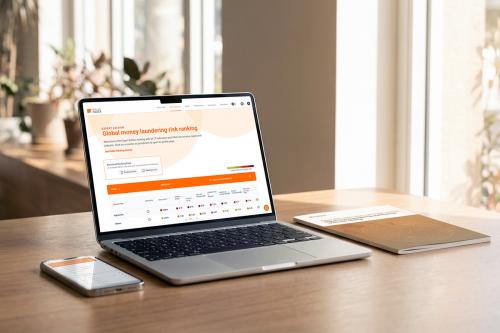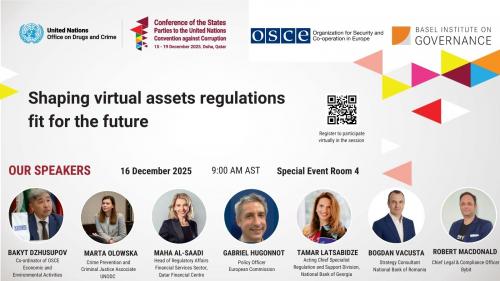Basel Institute on Governance publishes the 2013 edition of the Basel AML Index
The 2013 edition is the second release of the Basel Anti-Money Laundering (AML) Index. First published in April 2012, it continues to be the only rating of country money laundering/terrorist financing risk by an independent non-profit institution. A Public Edition of the AML Index is available online free of charge. An Expert Edition facilitates more sophisticated independent risk assessments for financial institutions, which have to comply with AML, counter-terrorism financing (CTF), sanctions, and anti-bribery rules.
The Basel AML Index 2013 results – key findings
The 2013 edition of the Basel AML Index covers 149 countries and assigns each country a score on a scale from 0 (Low risk) to 10 (High risk). High scores indicate a country is more vulnerable to money laundering/terrorist financing based on its AML/CFT framework and other risk categories such as rule of law, corruption and financial and public transparency.
In the 2013 Basel AML Index, the 10 highest-risk countries were Afghanistan (8.55), Iran (8.48), Cambodia (8.35), Tajikistan (8.27), Iraq (8.19), Guinea-Bissau (8.17), Haiti (8.09), Mali (7.95), Swaziland (7.90), and Mozambique (7.90).
Among OECD countries, Greece (6.39), Luxembourg (6.24), Turkey (6.11), Japan (6.03), Austria (5.79), Germany (5.79), and Switzerland (5.76) received comparatively high risk scores, which reflects their roles as major financial centres, the Financial Action Task Force’s (FATF) Mutual Evaluation Reports (MER), local secrecy laws, and/or public disclosure of matters such as political financing.
As the Basel AML Index is designed to assess the risk of money laundering, the fact that any of these countries received a high ranking does not necessarily mean that they experience the most money laundering or terrorism financing.
By contrast, jurisdictions such as Cyprus (5.03), Singapore (4.92), the United Kingdom (4.81), or Colombia (4.64) had comparatively low risk ratings in the 2013 Basel AML Index, despite perceptions of them as major financial centres or tax havens. In these cases, the FATF MERs, which are given considerable emphasis and weight in the Basel AML Index, were an important factor that positively influenced their rating.
The countries with the lowest scores were Norway (3.17), Slovenia (3.29), Estonia (3.31), Finland (3.74), Sweden (3.75) and Lithuania (3.81).
Why the Basel AML Index?
Financial institutions and other businesses are required to identify high-risk jurisdictions in their country risk assessments. Some countries are more vulnerable to money laundering/terrorism financing than others. High-risk countries in money laundering/terrorist financing are often low-income or developing countries that are prone to corruption and tax evasion as well as industrialised countries where illicit assets are transferred and managed.
Studies have attempted to trace worldwide illicit financial flows and to estimate their volume. In the absence of exact figures, indicators may help to evaluate countries’ money laundering risks.
The Basel AML Index addresses the challenge of determining what constitutes a high-risk jurisdiction and then of assessing countries for their money laundering/terrorism financing risk. It aggregates 14 external independent variables from open source information, measuring countries compliance and implementation of AML and CTF laws as well as related aspects such as banking secrecy, corruption, financial standards, and judicial capacity.



